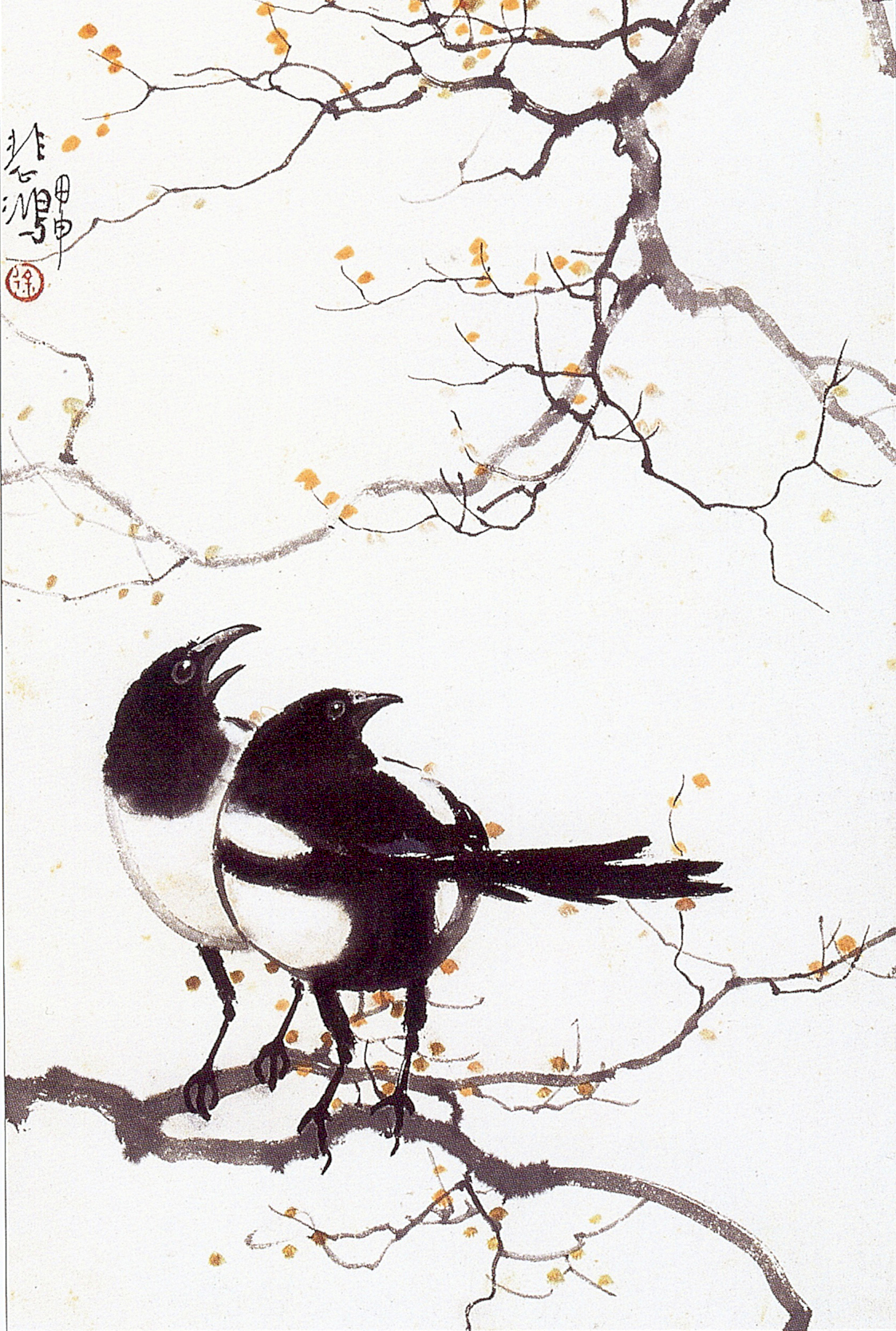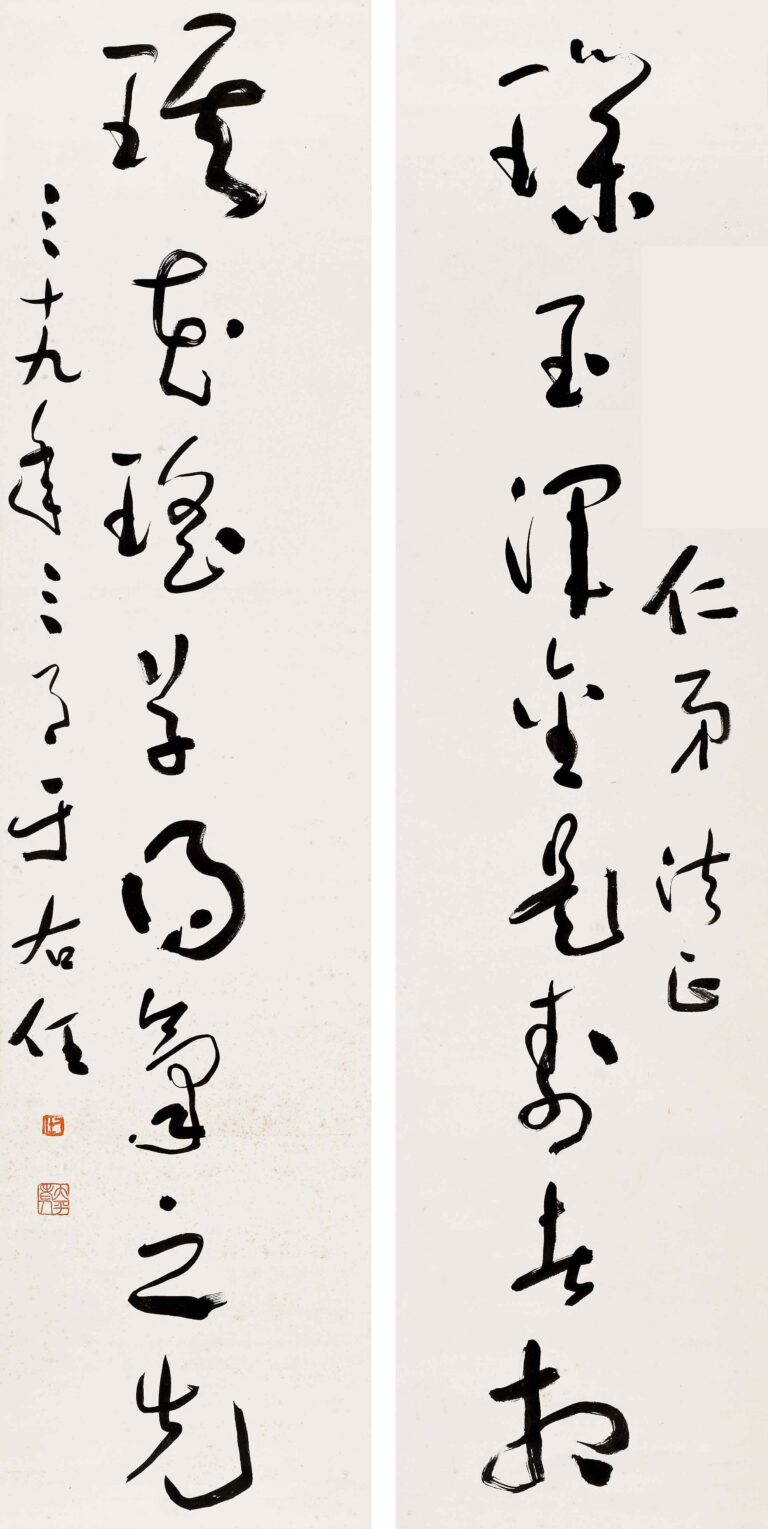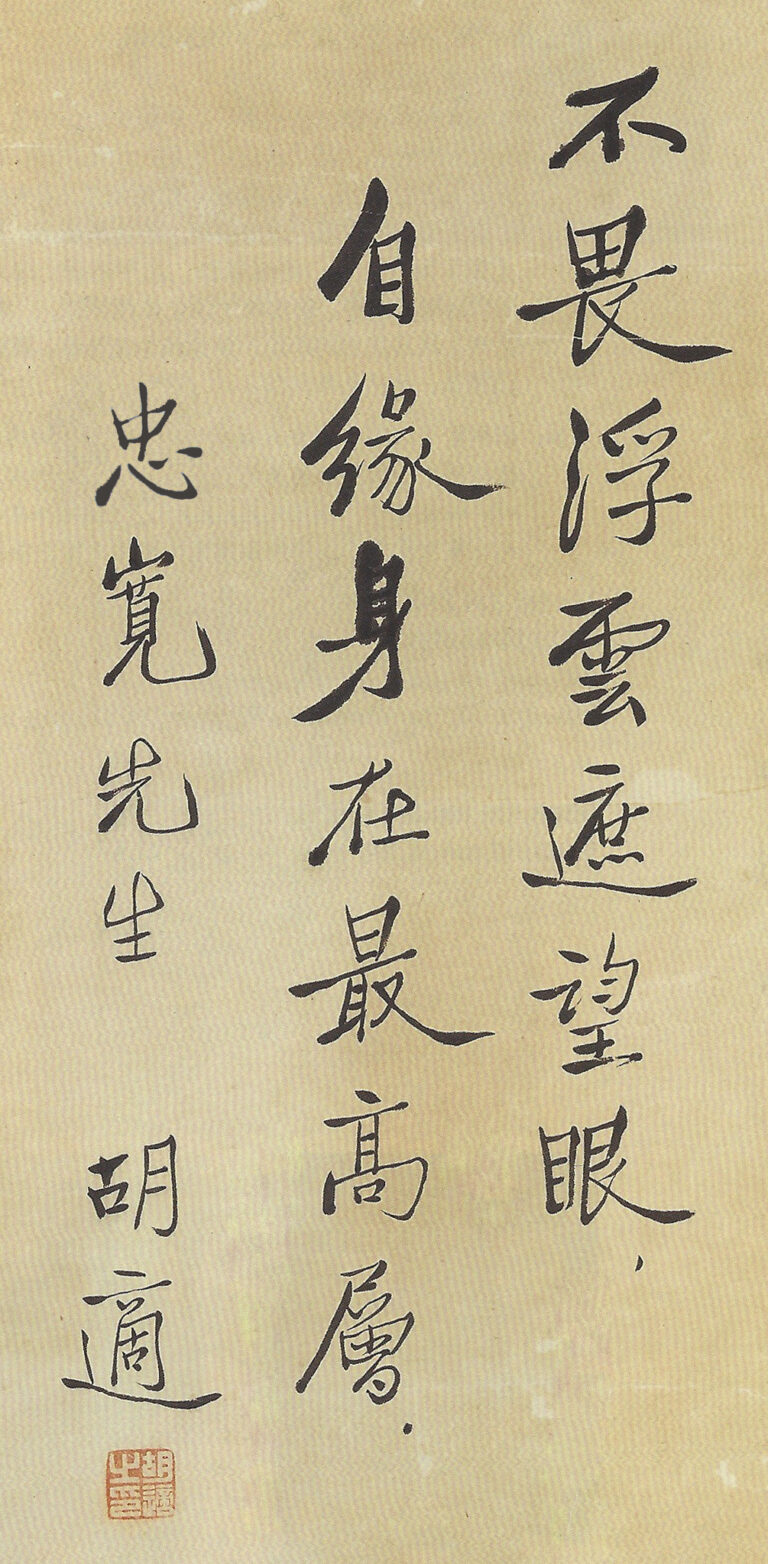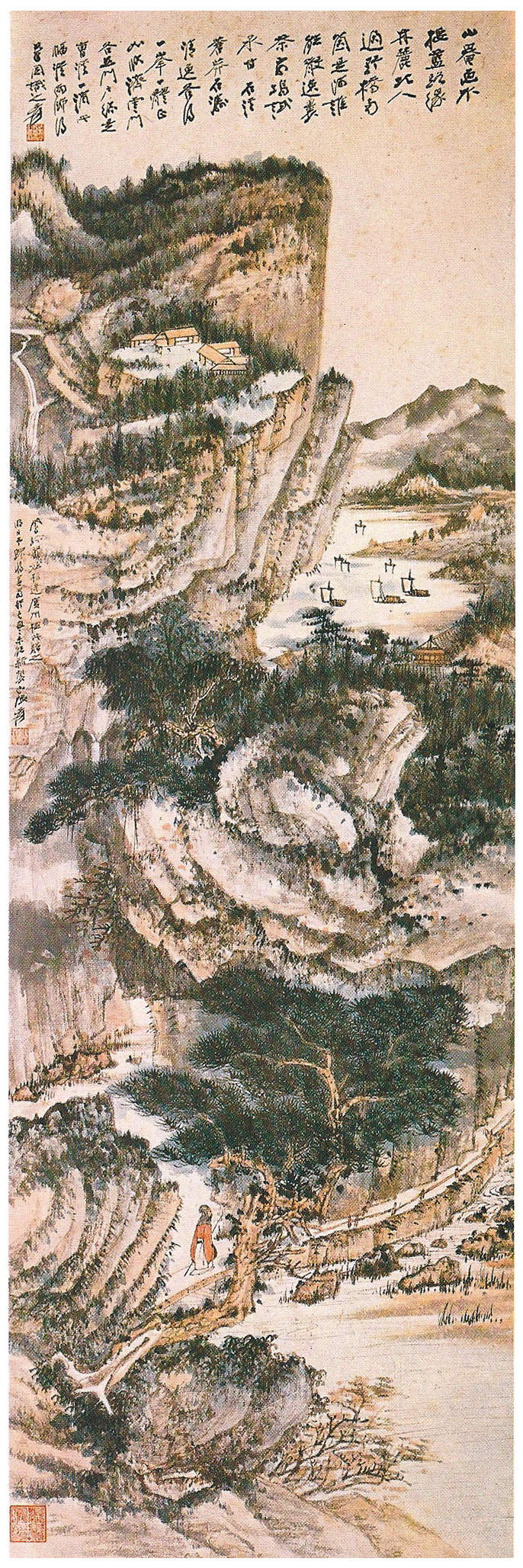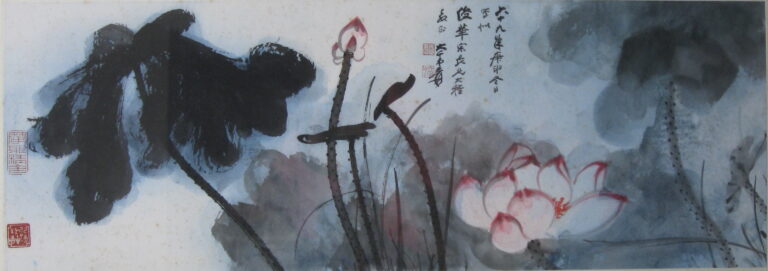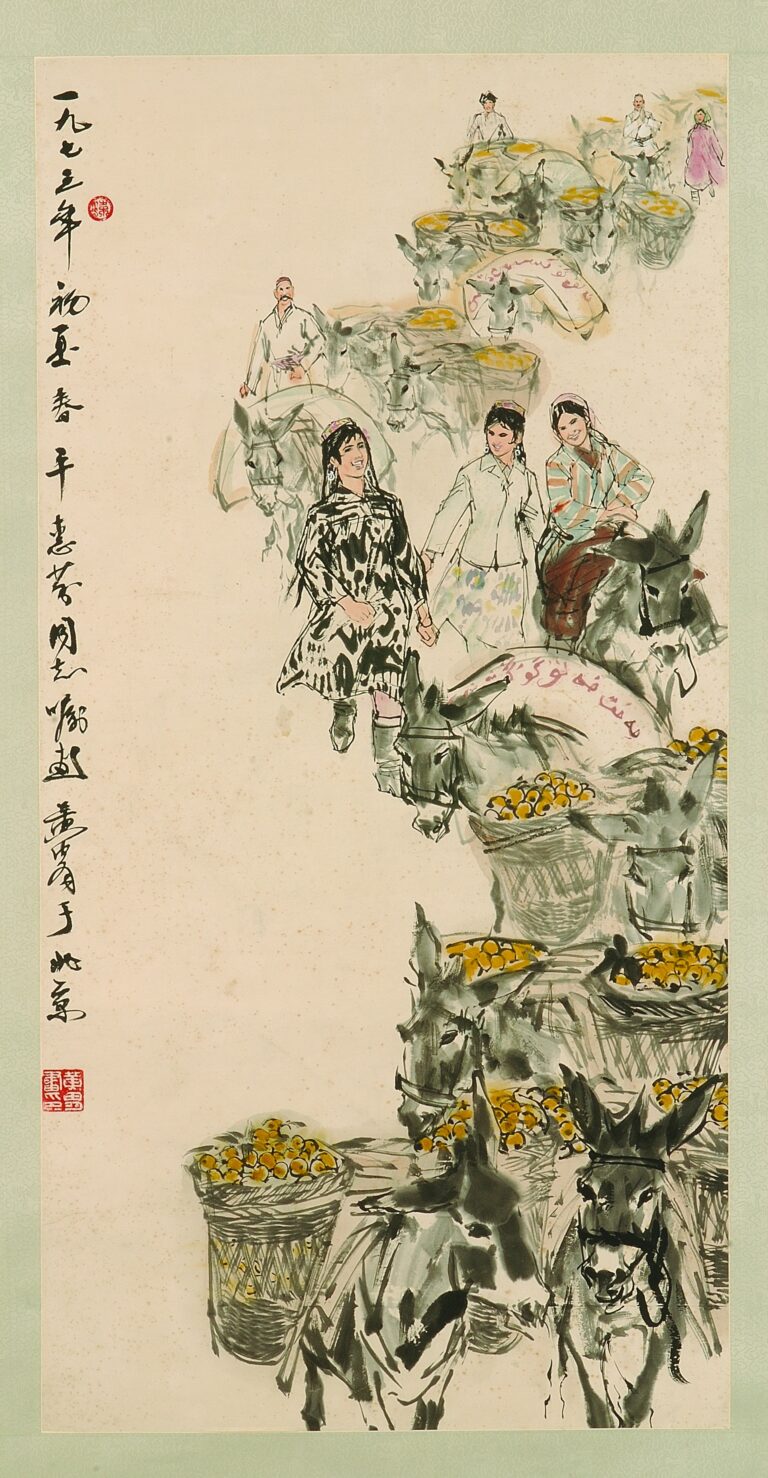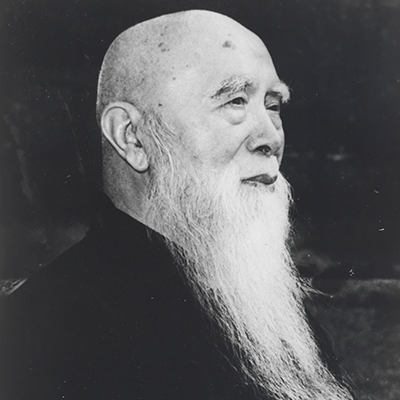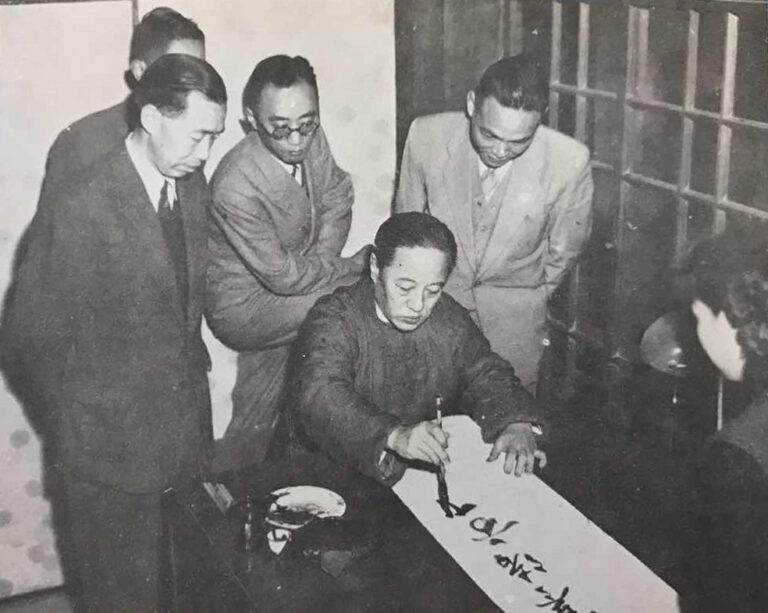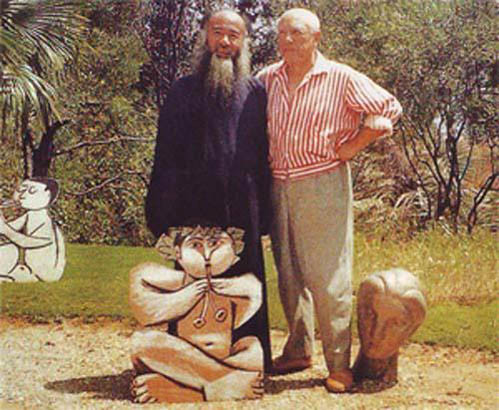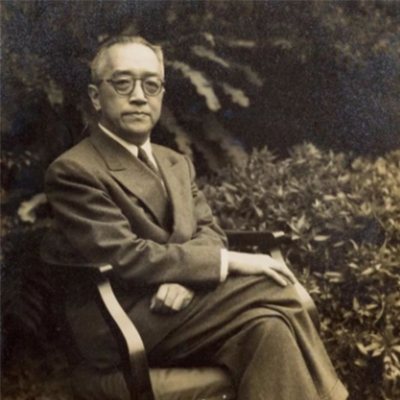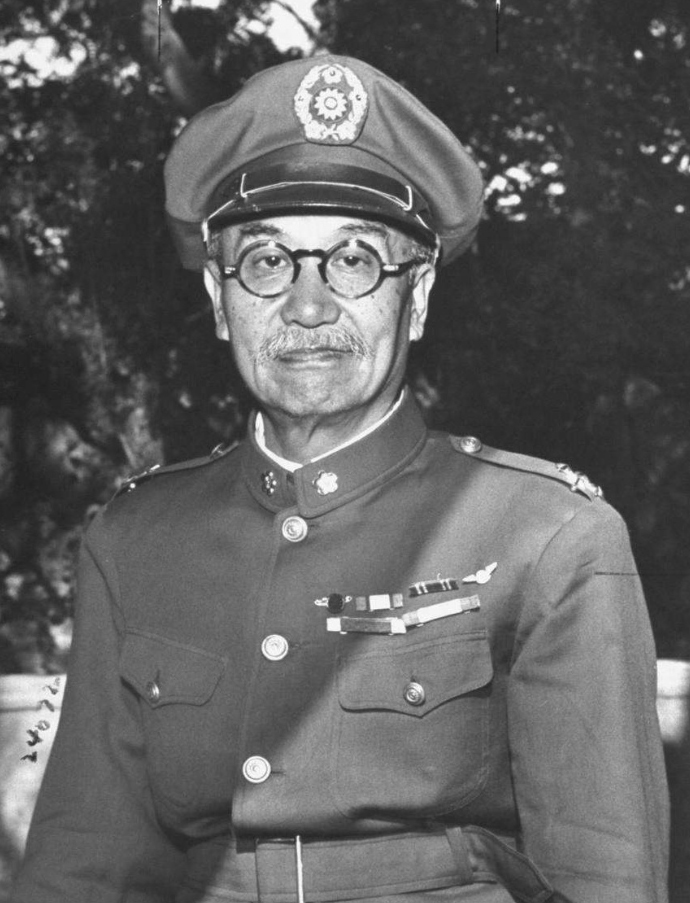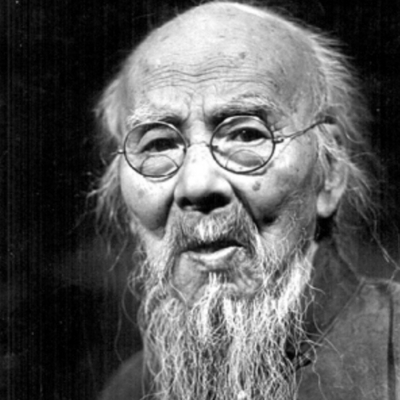Xu Beihong(1895-1953), the character Shoukang, a native of Yixing, Jiangsu, an important pioneer and educator of modern Chinese art. He has devoted his life to integrating Chinese and Western painting methods, put forward the creative proposition of "based on realistic kung fu and with national spirit as the connotation", and created a unique path of modern Chinese art. Xu Beihong is especially famous for his paintings of horses, but his paintings of flowers and birds are also self-contained, conveying strong poetry and vitality. This "Double Happiness Picture of Lamei" is a precious example of his theme of flowers and birds. It combines the glamorous aloofness of the severe winter plum blossoms with the smart vitality of the magpie, implying good luck and tenacity, and sustains his deep care for life and the national spirit. Care.
In the picture, two magpies are flying vigorously on the branches, their beaks are affectionate and their wings are smart, and they are side by side with the blooming plums. The plum blossom stands upright in the winter, symbolizing high integrity and strong will; the magpie has been a bird of good tidings since ancient times, and the double happiness of flying together means auspicious and happy. Xu Beihong's labei, with vigorous branches and proud flowers, portrays the tough texture of flowers and trees with the dry and wet changes of the tip of the pen and the thickness of the ink color. Magpies are depicted with smart and interesting brushstrokes, filled with the rhythm of life and the joy of the world. The overall charm of the picture is vivid, the artistic conception is ancient and does not distort the real vitality, reflecting Xu Beihong's artistic realm of "foreign teacher creation and winning the source of the heart".
In terms of technique, Xu Beihong is good at combining western realistic techniques with traditional Chinese pen and ink to form a "Xu School of flowers and birds" with unique personal characteristics. He studied at the Higher Academy of Fine Arts in Paris, France, and acquired a rigorous foundation of sketching and perspective. After returning home, he integrated it into Chinese freehand painting, creating a new look of flower and bird painting. The composition of the flower branches and magpies in "Double Happiness of Lamei" is dense and consistent, and the background is ethereal, giving the picture a fresh and refined Oriental poetry. Between the pen and ink, there is not only the fineness of the craftsmanship, but also the freehand look, cleverly blending the tenacity of the harsh winter with the hope of spring.
From the point of view of cultural meaning, Lamei has been regarded as a symbol of the high wind and bright festival since ancient times. Literati and inkers of all ages often used plum blossoms as a metaphor for their festival. "Plum blossoms win with rhyme and Hanxiang are aloof." Blooming in the cold winter shows its loneliness and perseverance. In this work, Xu Beihong combines the integrity of the plum blossom with the auspicious fortune of the magpie, implying the national spirit of the Chinese people who are indomitable in difficult situations and facing hope. Although the age of creation of this painting has not been accurately recorded, judging from Xu Beihong's pen intent and the content of the inscription, it is considered a masterpiece in its mature period, with steady pen and ink, and far-reaching meaning.
"Double Happiness Picture of Lamei" is also highly favored in the market and collection circles. Xu Beihong's paintings of flowers and birds are rare, and every time he shows up at the auction, he can arouse enthusiastic pursuit. In the auction market in recent years, Xu Beihong's works on the theme of flowers and birds have set high-priced transaction records many times, showing his deep artistic skills and market value. As a giant in the modern Chinese painting scene, every ink mark in Xu Beihong's pen is an inheritance of tradition and a pioneering of the spirit of the times.
For collectors and art lovers, Xu Beihong's "Double Happiness Picture of Lamei" is not only a painting and calligraphy work, but also a precious historical and cultural testimony. It allows people to feel the affection of the painter and the echo of the times among the flowers and birds, and it also adds a touch of color to the territory of contemporary art collection.Dehuatang sincerely invites:
If you have Xu Beihong's "Double Happiness with Lamei" or other famous paintings, calligraphy, letters, and handwritten notes in your collection, please contact us. Dehuatang has long specialized inHigh-priced acquisition of famous ancient and modern Chinese calligraphy and painting, calligraphy and painting, calligraphy works and letters from celebrities, With the purpose of professional appreciation, fair quotation, and cash acquisition. We look forward to joining you in the event and adding to the inheritance of precious calligraphy and painting.
